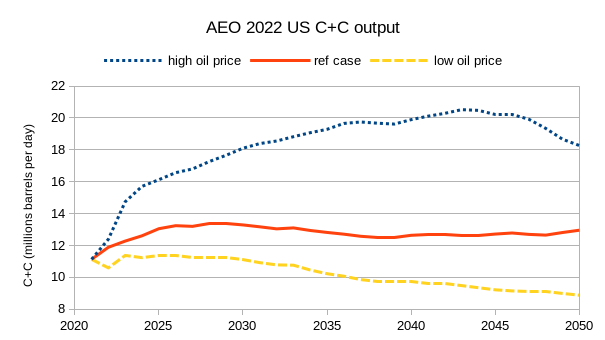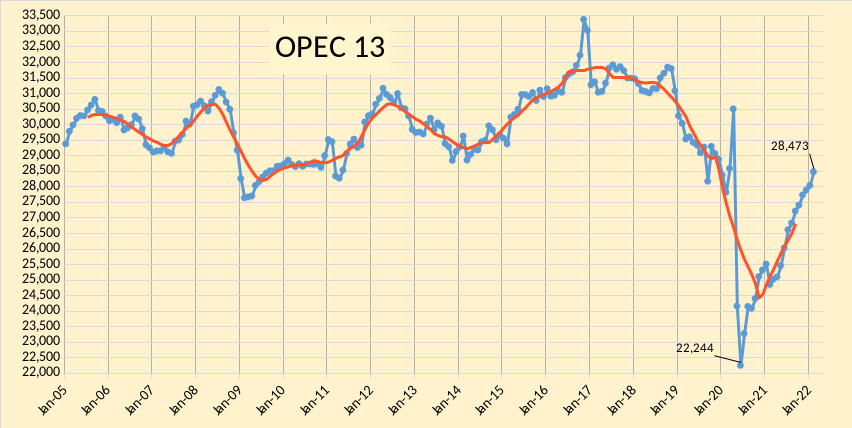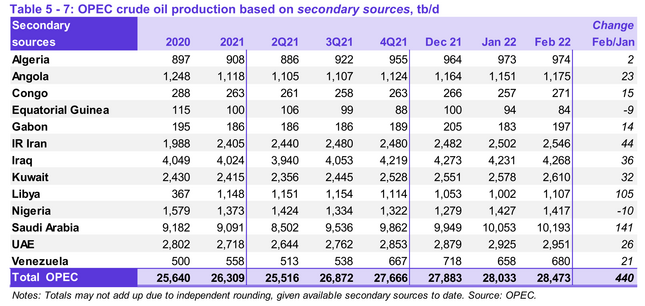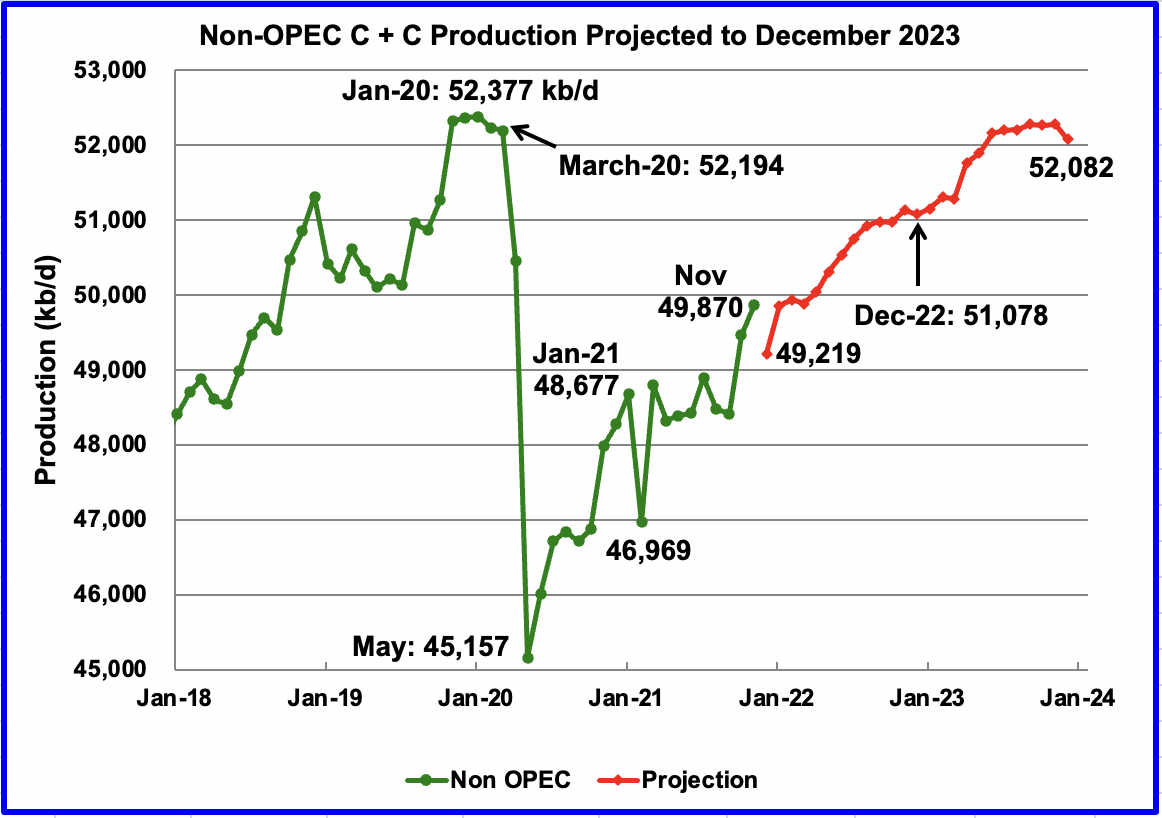The US Energy Information Administration (EIA) published its Annual Energy Outlook (AEO) 2022 on March 3.

The US Energy Information Administration (EIA) published its Annual Energy Outlook (AEO) 2022 on March 3.

Comments not related to oil or natural gas production in this thread. Thanks.
The OPEC Monthly Oil Market Report (MOMR) for March 2022 was published this week. The last month reported in each of the charts that follow is February 2022 and output reported for OPEC nations is crude oil output in thousands of barrels per day (kb/d). In most of the charts that follow the blue line is monthly output and the red line is the centered twelve month average (CTMA) output.


Guest post by orgfarm
Part 3 of 3
The “Nineties”
Three generations after the collapse, most folks are illiterate and animistic. They gaze in wonder at the vast ruins of dead and decaying cities: “Who built these places? How did they do it? Where did they go? We hear stories, but truly, they must be gods.”
Food and energy remain scarce in 2090, but with reduced threat of armed conflict, communities are finally able to settle peacefully in agricultural lands around the world. With scavenged materials they build self-sufficient towns, villages, and hamlets near waterways and important crossroads.
Settlements are resource limited, and socially cautious, averaging 150 people – “Dunbar’s number”. For survival requires reliable families, dependable friends, and trustworthy neighbors. These bonds minimize conflict and allow consensus to guide group action.
With careful and intensive community management, healthy soils slowly return. Cover crop, rotation, fallow, and herd grazing practices are strictly followed. Old cultivars when found are highly prized, while new ones are developed and exchanged with other regional growers.
A guest post by Ovi
Below are a number of oil, crude plus condensate (C + C ), production charts for Non-OPEC countries created from data provided by the EIA’s International Energy Statistics and updated to November 2021. Information from other sources such as OPEC, the STEO and country specific sites such as Russia, Brazil, Norway and China is used to provide a short term outlook for future output and direction for a few countries and the world.
